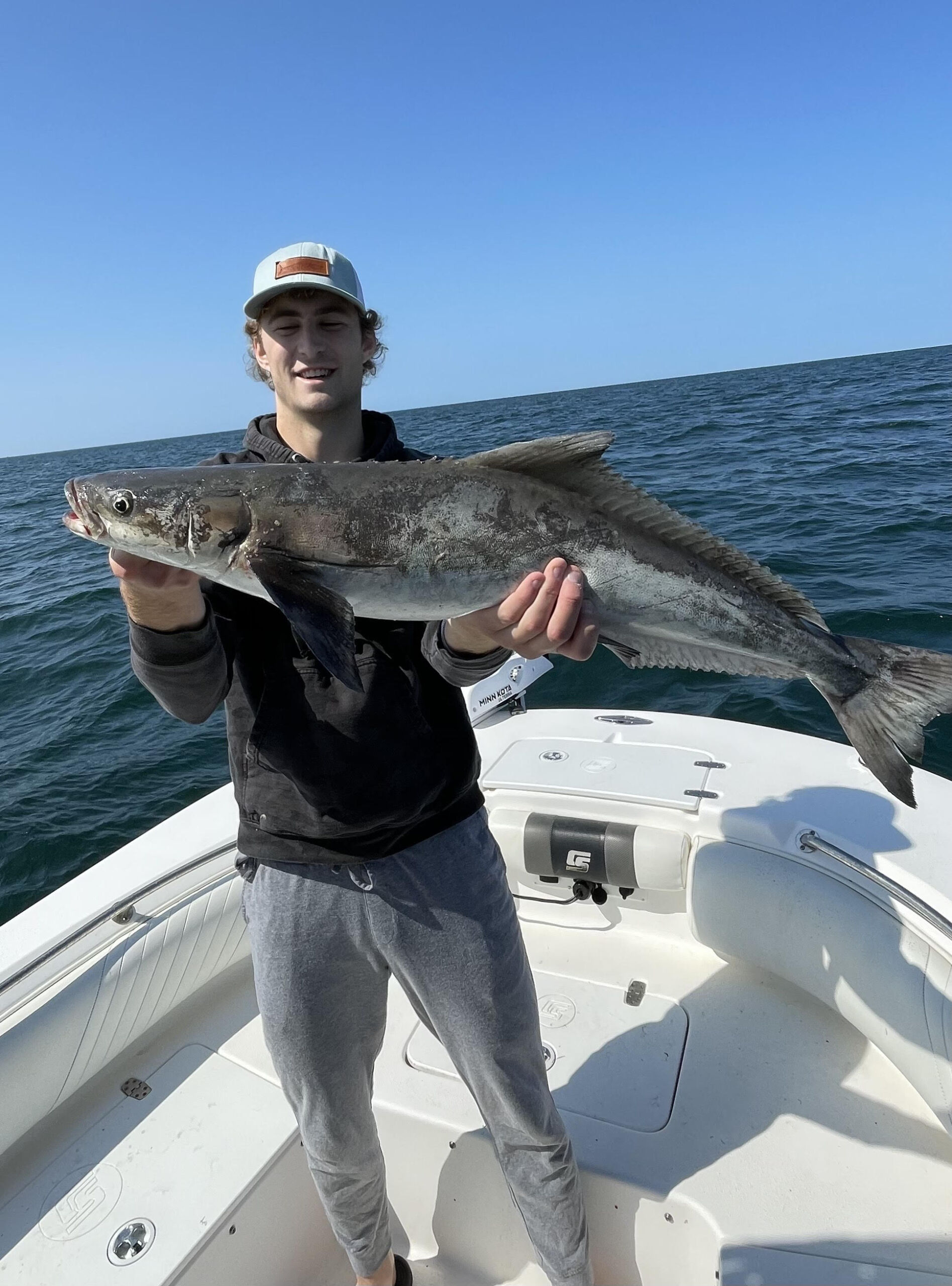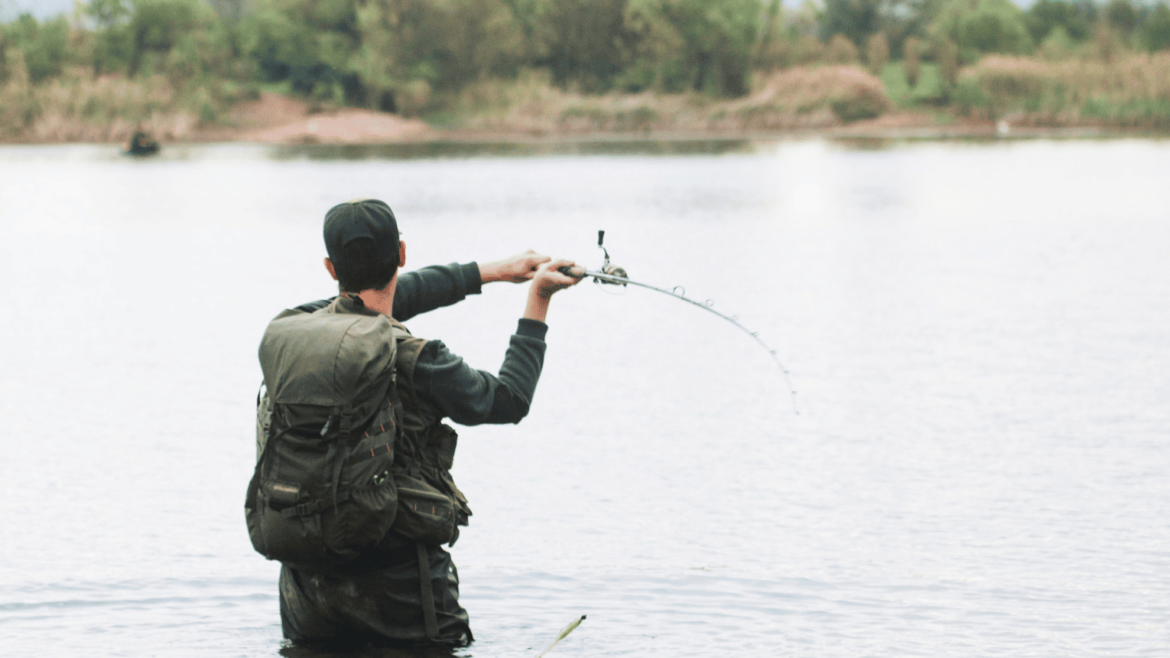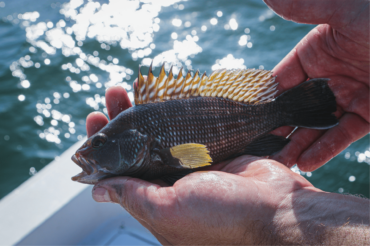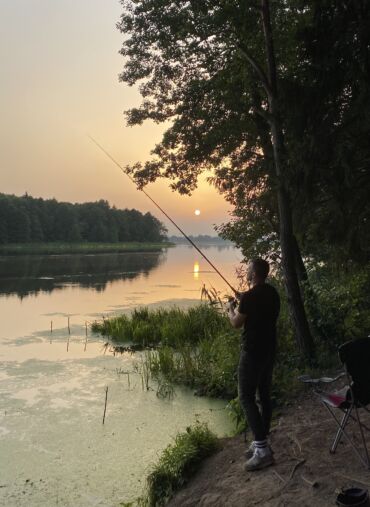Tidal conditions such as high tide and low tide play a significant role in fish behavior and activity, and understanding the tides will allow you to make better decisions about when the best time to hit the water is. The same body of water can have completely different levels of fishing activity, depending on whether or not it’s high or low tide.
While some fishing locations have dramatic changes between high and low tide, most places you fish will only have a subtle rise and fall of water levels.
In the following fishing tides article, we’ll cover:
If you’ve never fished before but are ready to try, check out this article on USA Free Fishing Days 2024 to discover when the free fishing days are in your state!
Thanks to the Fishbox, a premium downloadable Fishing Forecasting App that you can take with you wherever you go fishing, you’ll know the perfect time to plan your destination fishing trip based on accurate tidal predictions, when your target species is most active, and the best local hotspots.
Get your personalized fishing map
Answer a quick quiz and get your own personalized fishing map
To give you a more accurate tidal prediction, the Fishbox App uses six-hour intervals, morning, afternoon, evening, and night, which factors in fish behavior, duration of weather conditions, and tides to give you the best indication of peak fishing times.
Expert Opinion on the Best Tide for Fishing

Pierce Latta
16 years fishing experience
“As a primarily saltwater angler, tides have always played a massive role in my fishing experience. Even when I would fish with my grandfather when I was very little, I vividly remember talking about the tides and when we should head out to go fishing in order to catch the “right tide”. Over the years, tides have continued to play a huge role in saltwater fishing for me. I would even argue that tides are the single biggest factor in determining if you will catch fish or not—at least in saltwater. As you can see from the opening section of this article, tides are affected by the moon’s phases and, essentially, the gravitational pull of the moon on Earth. This shifts the water from the sea or out to the sea, resulting in tides. Interestingly enough, depending on where you are, tides can be drastically different. Where I normally fish at Ocean Isle Beach, North Carolina, the tide swings about 6 feet, and each high and low tide is separated by about 6 hours. These levels can once again be different depending on where you are, so make sure to keep this in mind when you are fishing. The next section the article cracks into is the impact of tides on the behavior of a fish. Depending on the species of the fish and the location, this impact can vary dramatically. The article gives an example of how when the tide is falling, a lot of the bigger fish will move out of the area into deeper water. Think, for example, about shallow water, where species like redfish and trout usually inhabit. Some of the spots that these fish inhabit at high tide are out of the water at low tide, so these fish are forced to move elsewhere in order to stay alive during low tide. I love how the article mentions offshore fishing. And yes, you are right in assuming the tide has less of an effect on fish offshore, but it can still have small effects. For example, when the tide is falling, more bait is forced out, and bigger fish converge on them. The last thing the article touches on before concluding is debating the best time to fish between falling and rising tides. It gives some possible approaches, which are all valid, but I also want to give some input as I have been around saltwater fishing for almost the entirety of my life. First off, and contrary to popular belief, tide doesn’t matter all that much for most spots unless the water is very shallow. Here is the reason: as long as water is moving, you should be fine. For most of the saltwater spots I fish, as long as there is moving water, the fish will bite. However, as the tide gets closer to peak low or peak high—what is called slack tide—the action drops off significantly. Not much bait moves through the water, and there is no current to push that bait anywhere. Now listen to me carefully. I know I just said tides don’t matter all that much for MOST spots, but for some, it does. I have a few spots where fish only hit well on the falling tide or only hit well on the rising tide. This takes research and mainly time on the water to figure out. So get out there and try some of your spots at different tides to see what works best. I hope you enjoyed reading this article and these comments. As always, good luck and tight lines.”
Visit his Instagram profile.
Subscribe to his YouTube channel.
Understanding Tides
Understanding the tides, how tides work, and why the tide affects fish behavior the way it does will take your fishing to the next level. You will catch more fish and do it all while spending less time on the water, maximizing your fishing efficiency. So, before you go fishing, especially in a new location, take the time to check out the tidal conditions in your area.
If you are fishing in a new area and you’re unfamiliar with low and high tide times, then download the Fishbox App, which will not only tell you when it’s high or low tide but also give you the best times to go fishing based on a variety of factors including tides, weather, and fish behavior.
Tides are created by the combination of the gravitational pull of both the sun and the moon on the Earth’s atmosphere.
During high tide, when both the sun and moon align, creating a parallel gravitational pull, the Earth’s oceans are dragged or pulled higher up onto the shores and beaches. During low tide, when the moon and sun are creating a perpendicular pull, the water will be pulled or fall away from the shorelines and beaches.
A typical tidal cycle duration is close to 24 hours, which is why coastal areas and beaches experience two cycles of high and low tides in a day. From low tide to high tide takes approximately six hours, and it takes six hours for it to go from high tide back to low tide again. If it was high tide at six am, the next high tide would be approximately six pm.
During a lunar perigee, which is when the moon’s orbit has brought it closer to Earth, the tidal movements will be at their peak. During a lunar apogee, when the moon has orbited further away from Earth, the tidal movements will be at their weakest.
Common Tidal Terms
- Low Tide – A low tide is when the water is at its lowest level and is neither rising nor falling.
- High Tide – A high tide is when the water has reached its highest point and is neither rising nor falling.
- Rising Tide – This is when the water levels are increasing.
- Falling Tide – This is when the water levels are decreasing.
Impact of Tides on Fish Behavior
The Impact of Tides in Shallow Water, Beaches, Bays, and Estuaries
Different tides, high or low, will have a direct impact on fish behavior. Tides are an integral part of the marine ecosystem. As the tide increases and moves water around the ocean, plant life, crustaceans, debris, and microorganisms are carried along and then congregate in more condensed pockets and pushed into shallower waters when the tide is rising and deeper water when the tide is falling.
These pockets of plant life, debris, baitfish, and plant life are integral to the oceanic food chain, on which bigger fish feed. When the baitfish are moving into the shallower water on a rising tide, the bigger fish follow them in, using the shoreline, rocks, and pools to hunt them down easily.
When the tide falls, the food and fish feeding on them move back into deeper water until the whole cycle repeats itself again six hours later.
The Impact of Tides in Deep Water
In deep water, such as the ocean and offshore, or the further you travel away from shore, the less influence tidal conditions will have on fishing. However, that doesn’t mean you shouldn’t consider the tide when going offshore fishing.
As the tide ebbs or goes out, larger fish will move with it. If you’re skilled enough and take some time to do your research, you can find the general area where the larger fish are hanging out, waiting for the tide to switch and catch them.
Another useful trick is to study the currents and find where the ocean’s currents are pushing food sources. That way, if you find these concentrations, you can fish. Keep in mind that these locations won’t have a sign on them, and they won’t always be clearly identifiable rock or reef formations, with some forming deep under the water.
Best Time to Fish: High Tide Vs. Low Tide
The best time to go fishing is always going to be at a moving tide. This could be either a rising tide or a falling tide. However, in some locations with strong tidal movement, fishing with baits and lures can be quite tricky, and slack water, the period between tide changes, may be your best opportunity to land a fish without the current pushing baits and lures into snags.
Fishing Outgoing Tides
An outgoing or falling tide will carry small bait fish, plants, and other debris out of shallow water areas such as mudflats, creeks, and beaches, pushing them out into deeper water. The mouth of an estuary or river is a prime location to catch larger fish waiting for their dinner to come to them. Other locations to check on an outgoing or ebb tide are around structures such as jetties, wharves, piers, and rock formations.
Fishing Incoming Tides
As the tide rises and the water starts to flow into estuary areas, bait fish move with it, and not far behind them are larger fish looking for some tasty snacks. Water coming from the ocean is typically clearer and cooler, encouraging fish-feeding activity. However, even when tidal conditions are perfect, wind and weather can also affect how fish feed, so take this into consideration when planning your fishing trip.
Read also: Fishing Golf Courses: How to be Respectful and Still Catch Fish
Best Tide to Go Fishing: High or Low Tide? – Conclusion
There you go! Everything you wanted to know about tides included how tides impact fish behavior, what tides are, what causes high and low tides, and the best time to fish, high tide versus low tide.
While tidal conditions aren’t the only factor you’ll need to consider before you go fishing, it is an integral part of understanding and predicting fish behavior. It will significantly increase your chances of having a successful fishing trip if you know when the fish are most active and when you’re better off spending some time at home catching up on tackle or boat maintenance.
Get your personalized fishing map
Answer a quick quiz and get your own personalized fishing map
Thanks to the Fishbox App, a premium downloadable Fishing App that you can take fishing with you wherever you go fishing, you’ll know the perfect time to plan your destination fishing trip based on accurate tidal predictions, when your target species is most active, and the best local hotspots.



